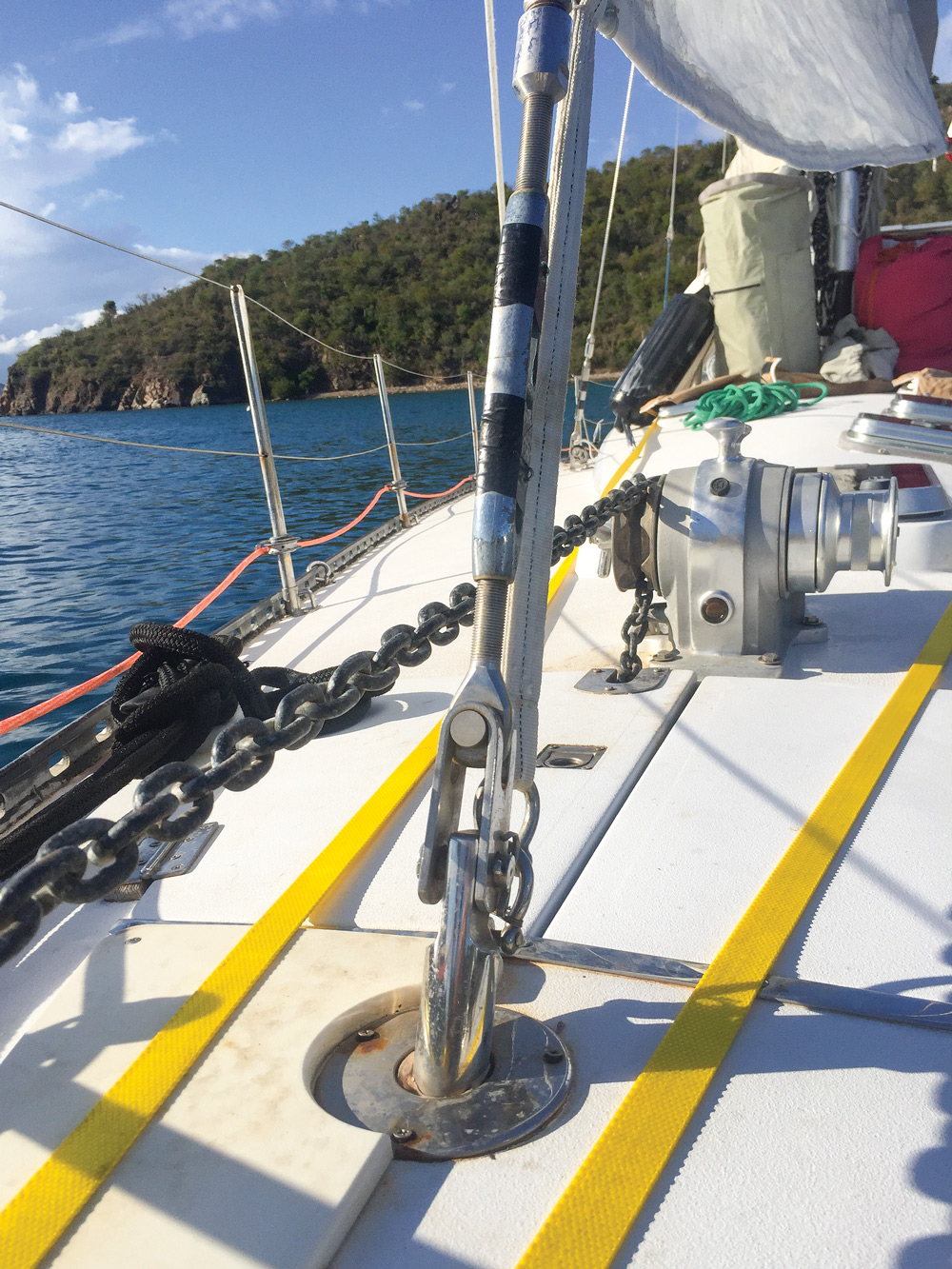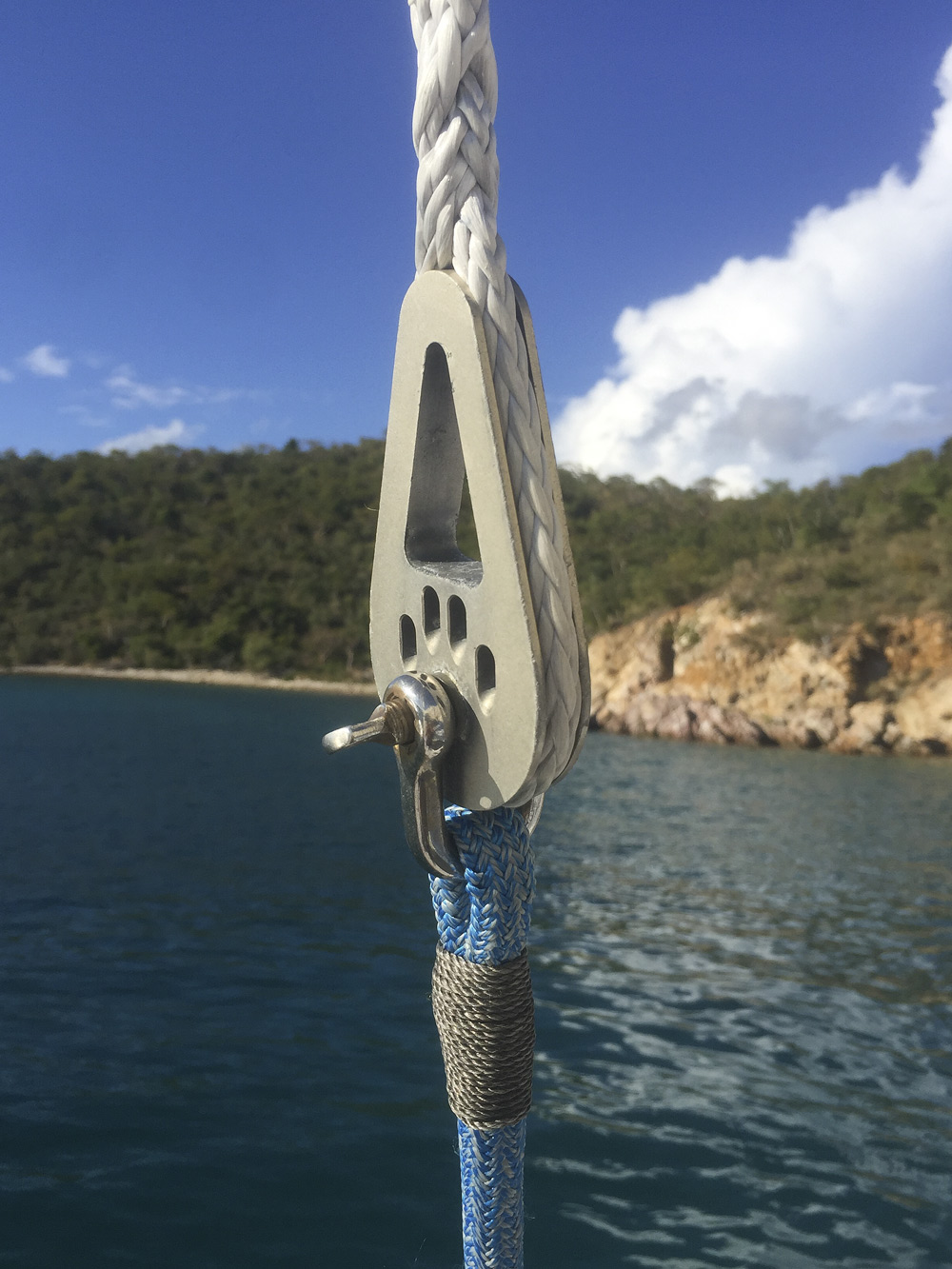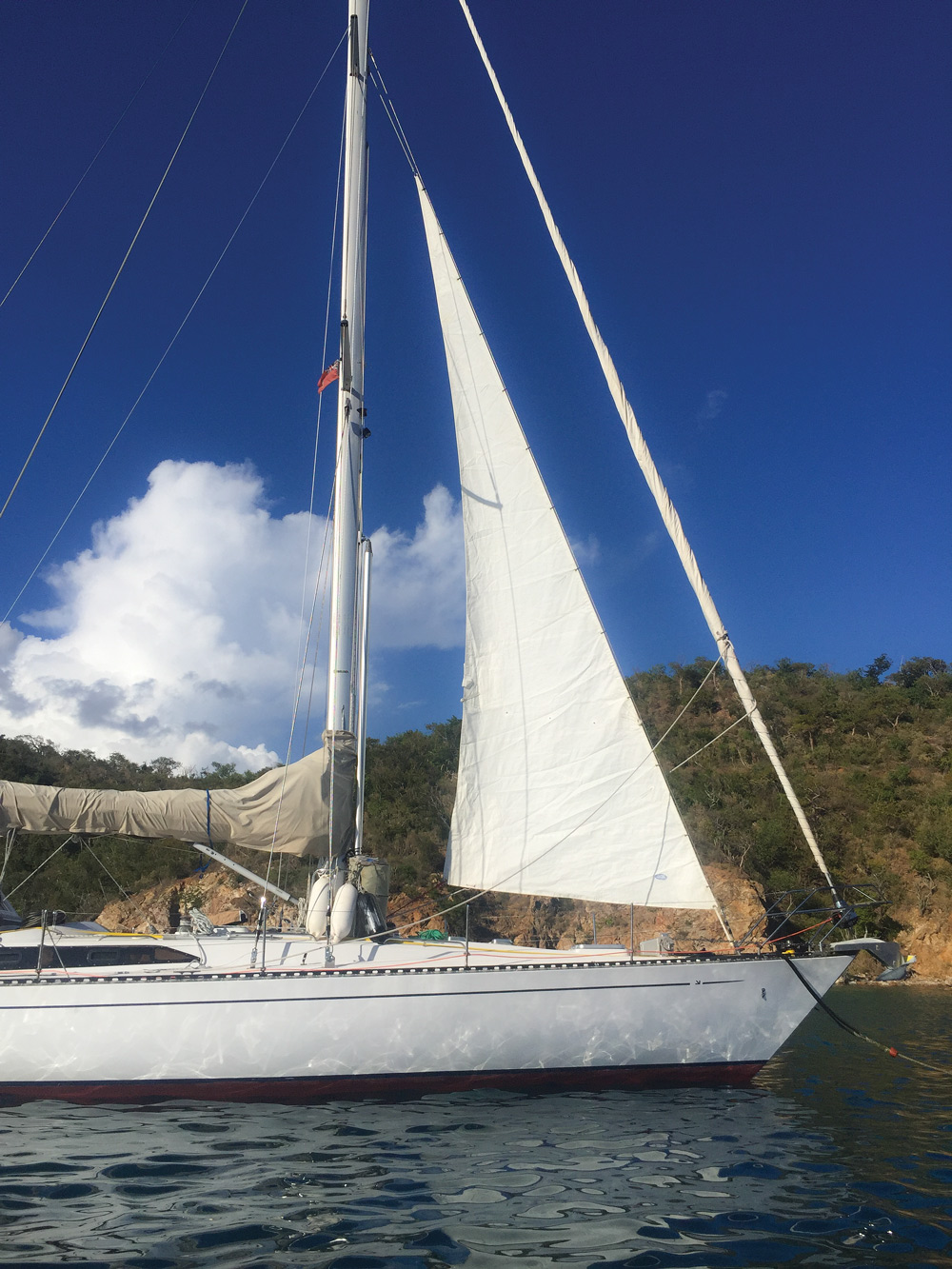Adding a staysail
A properly rigged staysail is a great passagemaking tool
Sail selection is key for offshore sailing. You need a combination that provides speed without overburdening the boat and enough flexibility that you don’t have to make frequent sail changes.

Everyone knows what to do when the wind pipes up: take a reef in the main and roll in some headsail. If you are on an afternoon sail, a reefed headsail is OK, but it’s not perfect. The effect of rolling in the sail raises the center of effort, inducing more heel, and the sail shape and the sail suffer. Offshore, these attributes will slow you down and make for a miserable passage. A better solution is to use a staysail, the center of effort will be low and the shape perfect.
With the exception of bluewater battlewagons, you don’t see staysails on most boats these days, and for good reason. Placing a stay right in the middle of the foretriangle makes tacking the genoa difficult, and it’s a few thousand dollars of gear and weight that seldom get used on a coastal afternoon. But for offshore sailing, the extra hassle and cost are well worth it.
On a typical bluewater boat, a single reef and a staysail are perfect for going to windward in more than 25 knots. A deeper reef will allow you to make way in higher winds. A tough boat can forereach through about anything with a deep mainsail reef and a robust staysail setup.
There are three items that need attention when adding a staysail: the standing rigging, the running rigging and the sail itself.
In order to install a stayed staysail, you are essentially adding a second forestay about a third closer to the mast. The stay attaches to the deck about a third of the way back and to the mast around the upper spreader. It’s important, although not critical, that the staysail stay is parallel to the forestay. You can play with the angle a little, but it will look the best parallel.
While the stay seems simple, there are big forces at play here. When loaded up, the stay will pull upward on the deck and forward on the mast, and forces need to be opposed. A deck seems pretty strong, but it will deflect and fail if you attach a chainplate right in the middle of your foredeck. The most common way to reinforce the deck is by attaching the chainplate into a bulkhead, perhaps at the aft end of the chain locker. Another common solution is to use a tie rod attached to the hull, allowing the rod to transfer the load to the much stronger hull.
The next force to deal with is the one pulling the mast forward. Every stay on your boat has an equal and opposite partner balancing the loads. With the staysail pulling forward and to leeward, we need a stay that will pull backward and to windward, at roughly the same angle. The same angle part is important, people have tried to use aft led intermediate stays, but the angle on those is typically way too steep to be effective. You will need running backstays, and yes, they will get in the way of the main, but it won’t be a big deal.

The first decision to make is how you want the stay set up. Do you want a fixed wire stay, a furler or maybe a removable cordage stay? A fixed wire stay allows you to hank a staysail on directly and go to sea. It’s a bulletproof solution, but there are negatives. You’ll need to go on the foredeck and hank on a sail to use it. A deck bag can help, but it’s still a hassle. The less obvious problem is that a bare wire stay is hard to tack the genoa around because the sail will almost always hang up on the wire. A furler solves both these issues: you can deploy from the cockpit and the furled sail presents a more slippery surface to tack around.
If you want a hanked-on sail, a more modern solution is a cordage stay. These stays are typically made of heat-treated Dyneema like Dynice Dux or New England STS, and winch tensioned through a block mounted to a padeye on the deck (reinforced as previously discussed) and to a rope clutch winch. The main benefit here is that the stay is easily removable and stowed like a halyard. A wire stay will clank around, but the lightweight Dyneema will stow nicely. If you choose a cordage stay, you will need to use soft hanks on the sail as standard bronze hanks will quickly chafe the cordage.
With the stay figured out, running backstays need to be addressed. The runners will go from the mast to as far aft and outboard as you can run them, to get as much advantage as possible to oppose the staysail. On any boat longer than 40 feet, you’ll need to lead the runner tails to winches, as the loads are just too high for a tackle alone. Invariably wire runners will chafe on the main and clank around when tacking. Heat-treated Dyneema comes to the rescue again, the material is very strong and won’t chafe the main, but handles loads like stainless steel wire. The lightweight property of the cordage makes them very easy to stow as well.
Use tangs to attach the runners to the mast, where a slot to accept the tang has been created and reinforced. These fittings will securely connect the stay to the mast and provide a large radius bearing surface for the cordage to ride on, they attach easily with a through-bolt or T-Ball adapter.
Staysail running rigging is not a complicated matter, but you want to get it right. Sheets can be tricky to lead and you may have to install a new fixed block or lead to a car on a very short track. It’s important that the lead is good, avoiding chafing on the shrouds, cockpit coaming, dodger and anything else that gets in the way of a fair lead to the winch. Since a staysail is a great sail in a blow, expect this to be a high-load setup.
Work with a sailmaker to build a nearly bulletproof sail, built with heavy cloth and heavily stitched appropriate for the high winds you’ll be using it in. Also make sure to discuss the foot height with your sailmaker, as you want to keep the center of effort of the sail low to reduce heeling, but high enough off the deck to prevent it from catching green water that breaks over the deck.
Engineering a staysail for your boat can be a lot of work, but it adds a lot of flexibility and capability to your sailplan. Do the work carefully and it will pay dividends over many stormy miles.


Comments